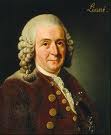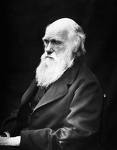Dinosaur Classification
 There
are tremendous amounts of organisms living today. Thousands more or even
millions have lived in the past and have now become extinct. Trying to
understand the nature of life and its evolution may be overwhelmingly
frustrating. But thousands of biologists and researchers have dedicated
their lives for us to have a better understanding of nature.
There
are tremendous amounts of organisms living today. Thousands more or even
millions have lived in the past and have now become extinct. Trying to
understand the nature of life and its evolution may be overwhelmingly
frustrating. But thousands of biologists and researchers have dedicated
their lives for us to have a better understanding of nature.
Classification is the art of listing or cataloguing organisms. There are many different ways this can be approached. For example they could be catalogued in the order they were discovered, by size, or by groups. Such lists, however, would not tell us anything about the qualities of the individual organism. Instead a system had to be developed. This brings us to Carolus von Linne or Linnaeus. He was inclined to identifying the degree of resemblance among different organisms. After careful study, it was clear to him that certain organisms shared features in common. This information was used to cluster these organisms together into related sets or groups.
To understand this concept, take for example a large group of animals that possess a bony backbone. This particular feature is found only on fish, amphibians, reptiles, mammals and birds. This group will be classified as "vertebrates". In the same way, we find that amphibians, reptiles, mammals and birds have four limbs and are grouped as "tetrapods". Fish are not tetrapods however, because they have fins instead of limbs. Furthermore if we look into tetrapods, we find that reptiles, mammals and birds all bear young that develops inside an egg-membrane known as the amnion, while amphibians do not. These groups are further grouped together as "Amniotes".
 When
Charles Darwin published his theory of evolution through natural selection
in 1858-1859. It caused huge controversy with people with religious beliefs
in that it implied that organisms had not been placed on Earth in one
divine act of Creation, but instead life had gradually changed or evolved
over an immense period of time through a mechanism called "Natural
Selection".
When
Charles Darwin published his theory of evolution through natural selection
in 1858-1859. It caused huge controversy with people with religious beliefs
in that it implied that organisms had not been placed on Earth in one
divine act of Creation, but instead life had gradually changed or evolved
over an immense period of time through a mechanism called "Natural
Selection".
His natural selection theory relies on a number of factors. First, all organisms in a species tend to vary. No two human beings are identical, except for identical twins of course. With this variation within species, it is possible that under certain environmental conditions some individuals will be better adapted allowing them to survive better than others. Allowing sufficient amount of time, perhaps thousands or even millions of years to go by. Organisms will transfer these favorable traits to their offsprings, which may exhibit a change in character (evolve). This is possible because surviving organisms will tend to be those with the favorable traits.
For example, when we look at bacteria, which reproduces at a rapid rate. We find that some bacteria has evolved against antibiotics becoming resistant to them. The same way cockroaches develop a resistance to insecticides. If we take this small changes that have taken place in a short amount of time, to the millions of years that have elapsed since the origin of life, about 3.1 million years, then the possibility of dramatic changes (evolution) in the form of organisms seems very reasonable.
Dinosauria
 The
term "dinosaur" was first used in 1842 by the British paleontologist
Sir Richard Owen. This term was applied to three large, partially known
fossils that belonged to reptiles from the English countryside. These
large fossil finds belonged to Megalosaurus, which Buckland had described
in 1824. Iguanodon, which was described by Mantell in 1822 and the third
the armored Hylaeosaurus, which Mantell had described in 1833.
The
term "dinosaur" was first used in 1842 by the British paleontologist
Sir Richard Owen. This term was applied to three large, partially known
fossils that belonged to reptiles from the English countryside. These
large fossil finds belonged to Megalosaurus, which Buckland had described
in 1824. Iguanodon, which was described by Mantell in 1822 and the third
the armored Hylaeosaurus, which Mantell had described in 1833.
Owen coined the term Dinosauria "fearfully lizards" to receive these taxa because he recognized that they were completely distinct from other reptiles. Owen made an observation to the five fused sacral vertebrae and the hip's structure which suggested that these animals walked in an upright posture.
In those early Victorian days, the concept of evolution had many meanings. Owen did not accept progressivism because he knew from the fossil record that new forms continue to emerge, and life is not a ladder of ascending complexity.
Owen's concept of the Dinosauria took hold, the statues of these dinosaurs were erected at the Crystal Palace Exposition in 1854. Although almost no other new dinosaurs were discovered in Britain until the 1970s, it was always regarded as the birth place of the dinosaurs.
Further study by Owen's former student, Harry Govier Seeley an expert on both Pterosaurs and anomodont showed that skeletal material of dinosaurs were consistent with two types of pelvic structure in this group.
The Saurischia, was a group of reptiles with a pubis directed mostly anteriorly and an ischium directed mostly posteriorly. The second group, the Ornithischia, resembled the pelvis of birds in having the shaft of the pubis retroverted to lie posteriorly next to the ischium.
In retrospect, all that Seeley had done was to recognize the distinctness of Ornithischia and Saurischia based on the structure of the pelvis, vertebrae, braincase, and armor. He neglected the similarities in the vertebrae, pelvis, and hindlimbs, among other skeletal structures, that Owen had noted in the animals on which he had originally based the taxon.
In 1970 the Phylogenetic System was created, a methodology that has since fundamentally changed not only the practice of taxonomy but also the approach to comparative biology as a whole. This was still not a simple system to classify these animals. Many areas of debate and ideas were brought up by other researchers.
R. T. Baker and P. M. Glaton (1974) argued that Dinosauria, including the birds, should be elevated to a new class of vertebrates, united by a suite of morphological features related to upright stance, bipedality, and metabolic level elevated above those of typical reptiles. These arguments were based on the hypothesis that birds evolved from theropod dinosaurs.
Circumstantial evidence from bone histology, zoogeography, functional morphology, and behavior suggested strongly that if dinosaurs were not exactly like modern birds and mammals, they are still more like them than like living reptiles.
The definitions of a taxon may be stem-based, node-bsed, taxon-based, or apomorphy-based. As the phylogenetic system has progressed, it turns out that the former two are far preferable to the latter two in the interest of stability.